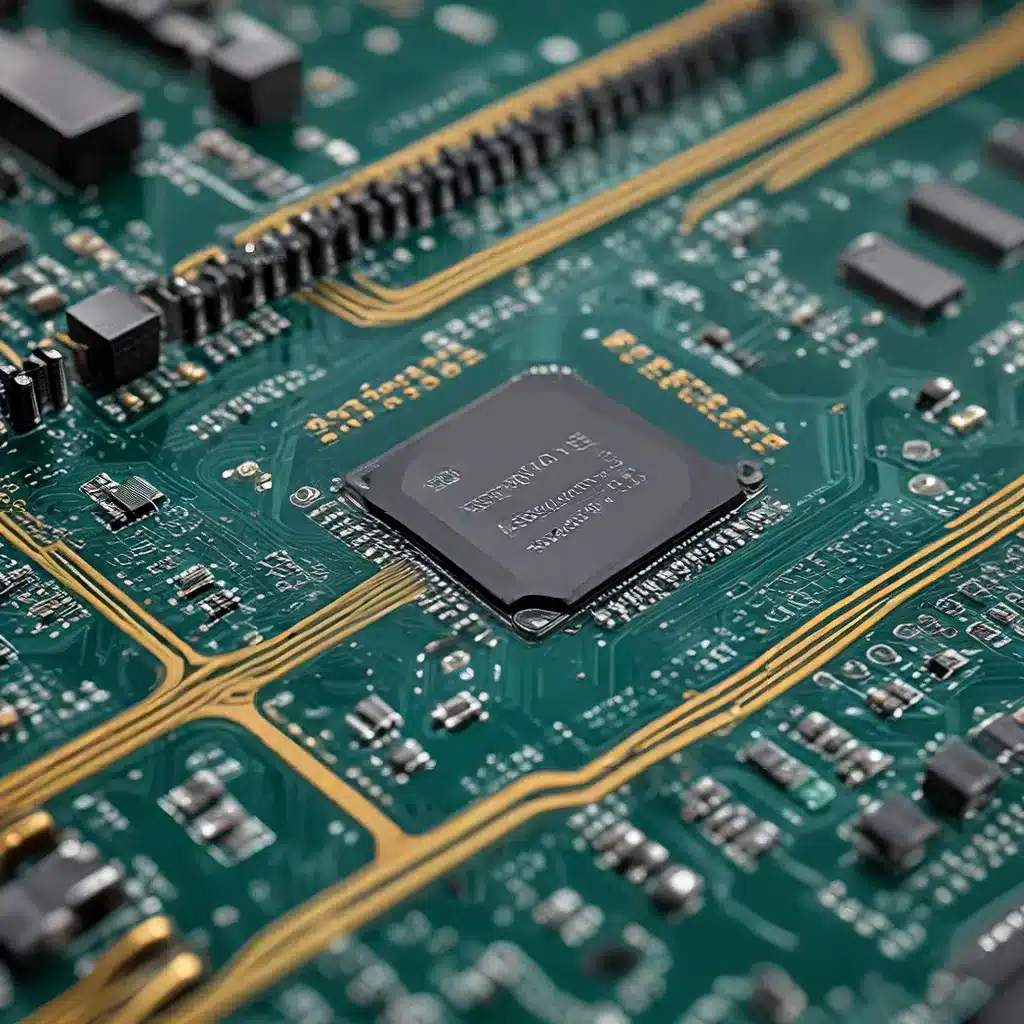
Revolutionizing the Mobile Robotics Ecosystem
The mobile robotics industry is experiencing a remarkable transformation, driven by advancements in sensor technologies and cutting-edge computing capabilities. As engineers integrate new technologies, every aspect of the mobile robotics ecosystem is evolving, from processing power and sensors to communication and energy management.
One of the key driving forces behind this revolution is the Arm Cortex-M family of microcontrollers. Introduced two decades ago, these microcontrollers continue to push the industry forward, offering wider capabilities for low-power operation, high performance, and exciting new peripherals. The latest iteration, the NXP MCX N Series MCUs based on Dual-Core Arm Cortex-M33, takes this innovation even further by incorporating a Neural Processing Unit (NPU) for machine learning acceleration at the microcontroller level.
NXP’s new MCX N Series MCUs are revolutionizing the field of mobile robotics, unlocking new possibilities for intelligent, autonomous systems. These microcontrollers bring a neural processing unit (NPU) to the microcontroller level, enabling real-time inference and classification of images to improve a robot’s awareness of its environment. The eIQ Neutron NPU supports a wide range of neural network types, including convolutional neural networks (CNNs), recurrent neural networks (RNNs), temporal convolutional networks (TCNs), and transformer networks, opening up new frontiers for the industry.
Advancing Edge Computing and Functional Safety
The advancements in mobile robotics are not limited to microcontrollers. Edge computing is also seeing continuous improvement, with microprocessors like NXP’s new i.MX 9 series featuring the eIQ Neutron NPU and a wide range of powerful peripherals. These cutting-edge computing solutions are crucial for mobile robotic systems, as they enable real-time data processing, decision-making, and inference at the edge, reducing the reliance on cloud computing and enhancing the responsiveness of autonomous systems.
Alongside these computing advancements, functional safety has become a major consideration in the field of mobile robotics, particularly in the automotive and industrial sectors. Robotic systems can now operate more safely with microprocessors featuring functional safety as a core principle, ensuring reliable and secure operation in dynamic environments.
Revolutionizing Power Electronics with GaN Technology
Another transformative technology in the mobile robotics industry is the commercialization of Gallium Nitride (GaN). This semiconductor material has had a profound impact on the electronics industry, revolutionizing power electronics with its ability to deliver higher performance and significantly improved efficiency.
For mobile robot applications, GaN-based motor drivers can be built into dramatically smaller volumes with much higher efficiency, resulting in longer battery life and reduced thermal management requirements. The rapid turn-on and turn-off speeds of GaN devices also allow for higher-frequency power converters, enabling the use of smaller, lower-cost inductors and capacitors.
Empowering Autonomous Mobility with Advancements in Sensors and Connectivity
As the mobile robotics industry continues to evolve, advancements in sensors and connectivity are playing a crucial role in enhancing the capabilities of autonomous systems.
Vision systems have become increasingly important, with microcontrollers and microprocessors featuring NPUs enabling real-time inference and classification of images to improve a robot’s situational awareness. Simultaneous Localization and Mapping (SLAM) algorithms, combined with machine learning techniques applied to 3D data environments, are further advancing robot navigation and autonomy, allowing them to operate more effectively in unstructured environments.
Alongside these sensor advancements, communication and connectivity have become essential for the integration of mobile robots into various applications. Integrating Wi-Fi, Bluetooth, and 5G networks enables remote control, real-time data transmission, and over-the-air updates, enhancing the flexibility and adaptability of mobile robots. Mesh networking and swarm robotics are also revolutionizing multi-robot collaboration, allowing robots to communicate, coordinate, and share information to achieve common goals.
Powering the Future with Innovative Battery Technologies
The advancements in mobile robotics are not limited to computing, sensors, and connectivity; energy management is also a critical aspect of the ecosystem. The commercialization of new battery chemistries, such as Sodium-ion batteries, is transforming the industry.
While Lithium-Polymer batteries continue to dominate the market in terms of power density, Sodium-ion batteries offer several advantages. They rely on more naturally abundant metals, reducing the uneven geographic distribution, high cost, and environmental impact associated with Lithium. Furthermore, Sodium-ion batteries do not require cobalt, nickel, and copper for their chemistries, such as NaFeO2, which can further reduce costs and increase material availability.
Major battery manufacturers are heavily investing in increasing Sodium-ion battery production capacity, which should result in lower battery costs and longer run times for mobile robot applications that are less sensitive to volumetric energy density.
Integrating IoT Protocols for Seamless Connectivity
As the mobile robotics industry continues to evolve, the integration of IoT protocols has become essential for the seamless connectivity and integration of these autonomous systems with other devices and systems.
Adopting protocols like MQTT and CoAP facilitates the integration of mobile robots with other connected devices and systems, enabling data exchange, command and control, and remote monitoring. This connectivity allows mobile robots to be more closely integrated into various IoT ecosystems, expanding their applications and enhancing their overall impact.
Conclusion: Shaping the Future of Mobile Robotics
The mobile robotics industry is undergoing a remarkable transformation, with sensor technologies and cutting-edge computing capabilities driving a revolution in the ecosystem. Advancements in microcontrollers, edge computing, power electronics, sensors, and connectivity are converging to create more intelligent, autonomous, and versatile mobile robots.
As these trends continue to shape the industry, we can expect mobile robots to become increasingly integrated into various aspects of our lives, revolutionizing industries and transforming how we live and work. The future of mobile robotics is bright, and the innovations in sensor design and computing technologies are at the forefront of this exciting transformation.
To learn more about the latest developments in mobile robotics and IoT, visit sensor-networks.org, a leading resource for professionals, researchers, and enthusiasts in the field.